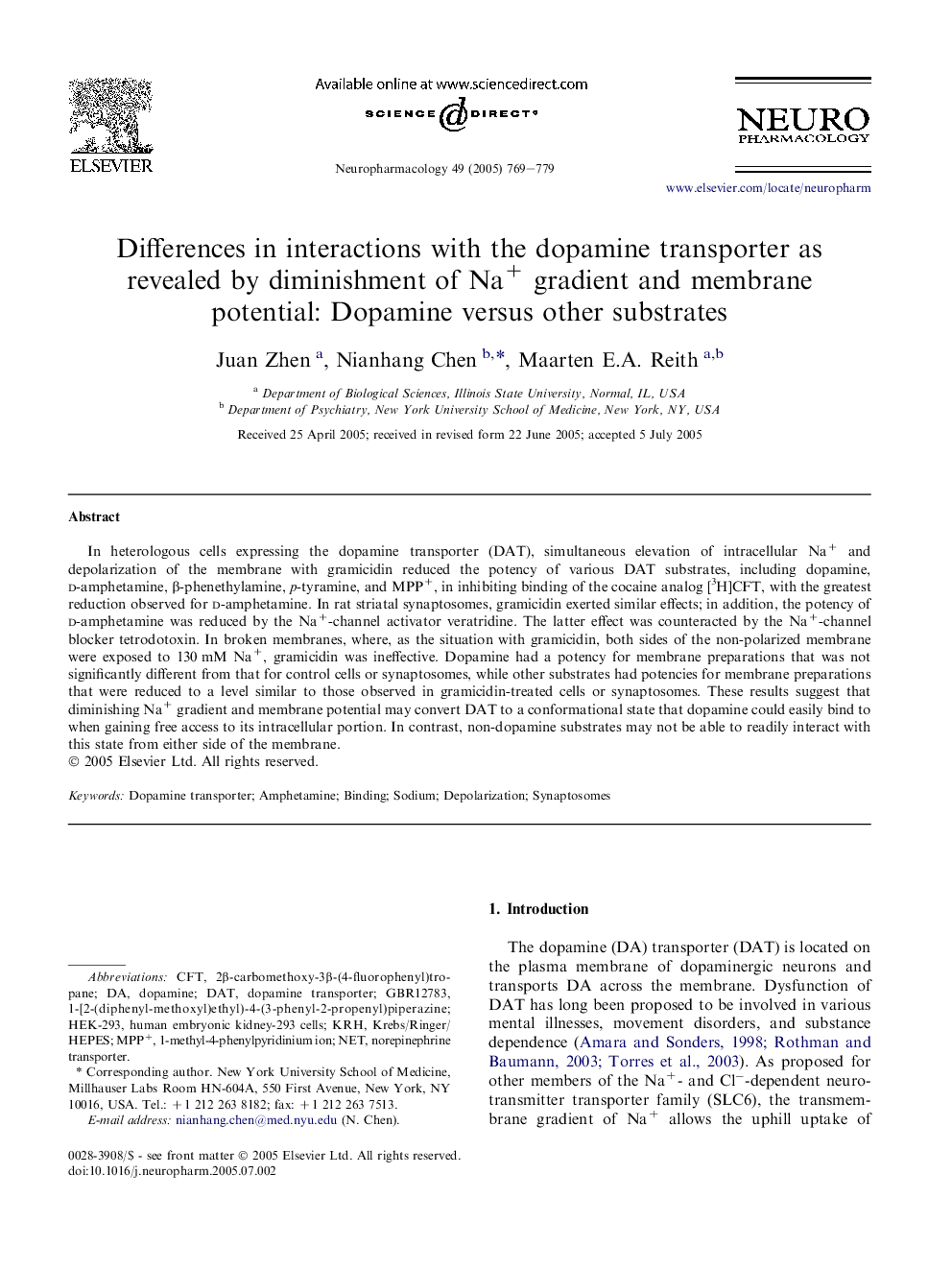| Article ID | Journal | Published Year | Pages | File Type |
|---|---|---|---|---|
| 8998276 | Neuropharmacology | 2005 | 11 Pages |
Abstract
In heterologous cells expressing the dopamine transporter (DAT), simultaneous elevation of intracellular Na+ and depolarization of the membrane with gramicidin reduced the potency of various DAT substrates, including dopamine, d-amphetamine, β-phenethylamine, p-tyramine, and MPP+, in inhibiting binding of the cocaine analog [3H]CFT, with the greatest reduction observed for d-amphetamine. In rat striatal synaptosomes, gramicidin exerted similar effects; in addition, the potency of d-amphetamine was reduced by the Na+-channel activator veratridine. The latter effect was counteracted by the Na+-channel blocker tetrodotoxin. In broken membranes, where, as the situation with gramicidin, both sides of the non-polarized membrane were exposed to 130 mM Na+, gramicidin was ineffective. Dopamine had a potency for membrane preparations that was not significantly different from that for control cells or synaptosomes, while other substrates had potencies for membrane preparations that were reduced to a level similar to those observed in gramicidin-treated cells or synaptosomes. These results suggest that diminishing Na+ gradient and membrane potential may convert DAT to a conformational state that dopamine could easily bind to when gaining free access to its intracellular portion. In contrast, non-dopamine substrates may not be able to readily interact with this state from either side of the membrane.
Keywords
Related Topics
Life Sciences
Neuroscience
Behavioral Neuroscience
Authors
Juan Zhen, Nianhang Chen, Maarten E.A. Reith,
